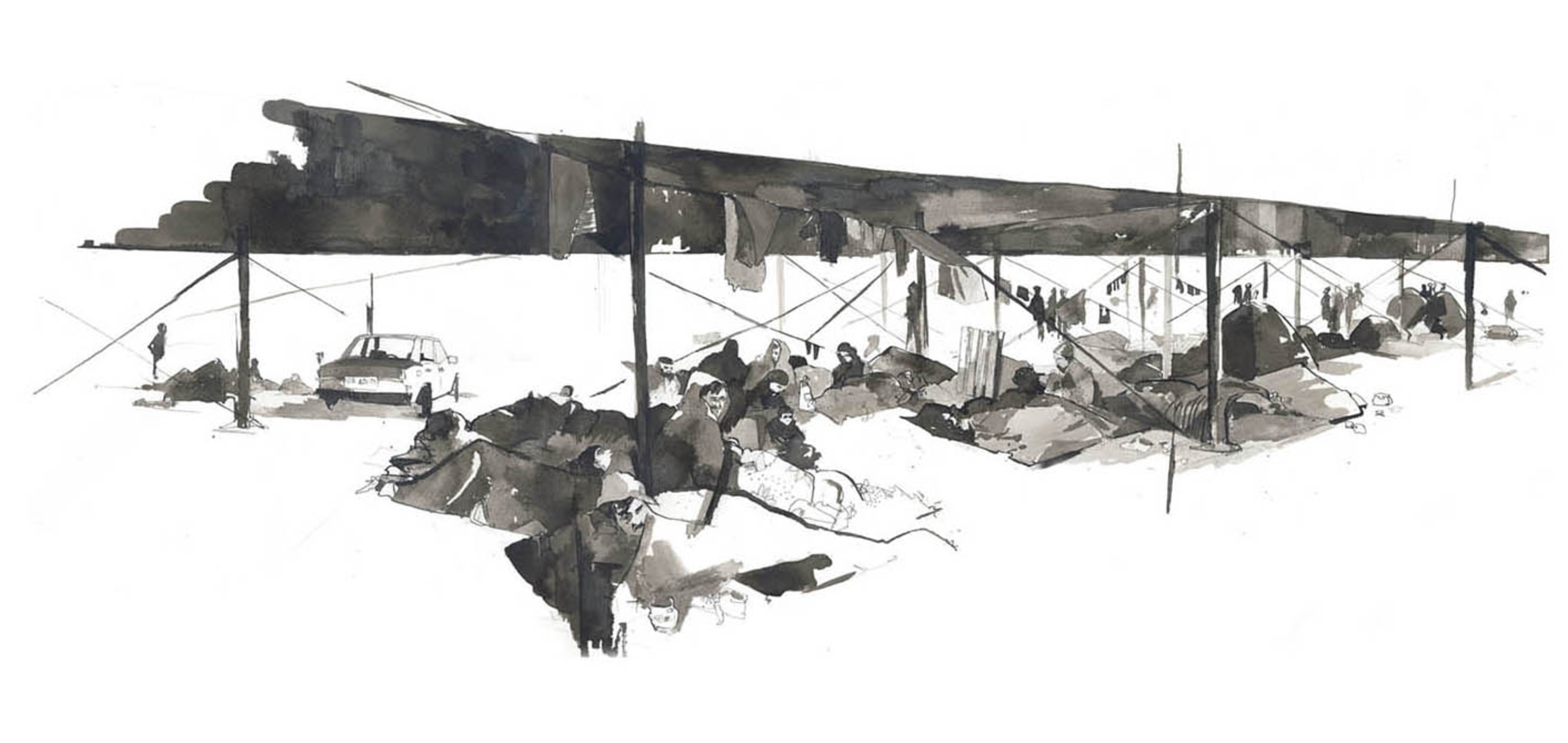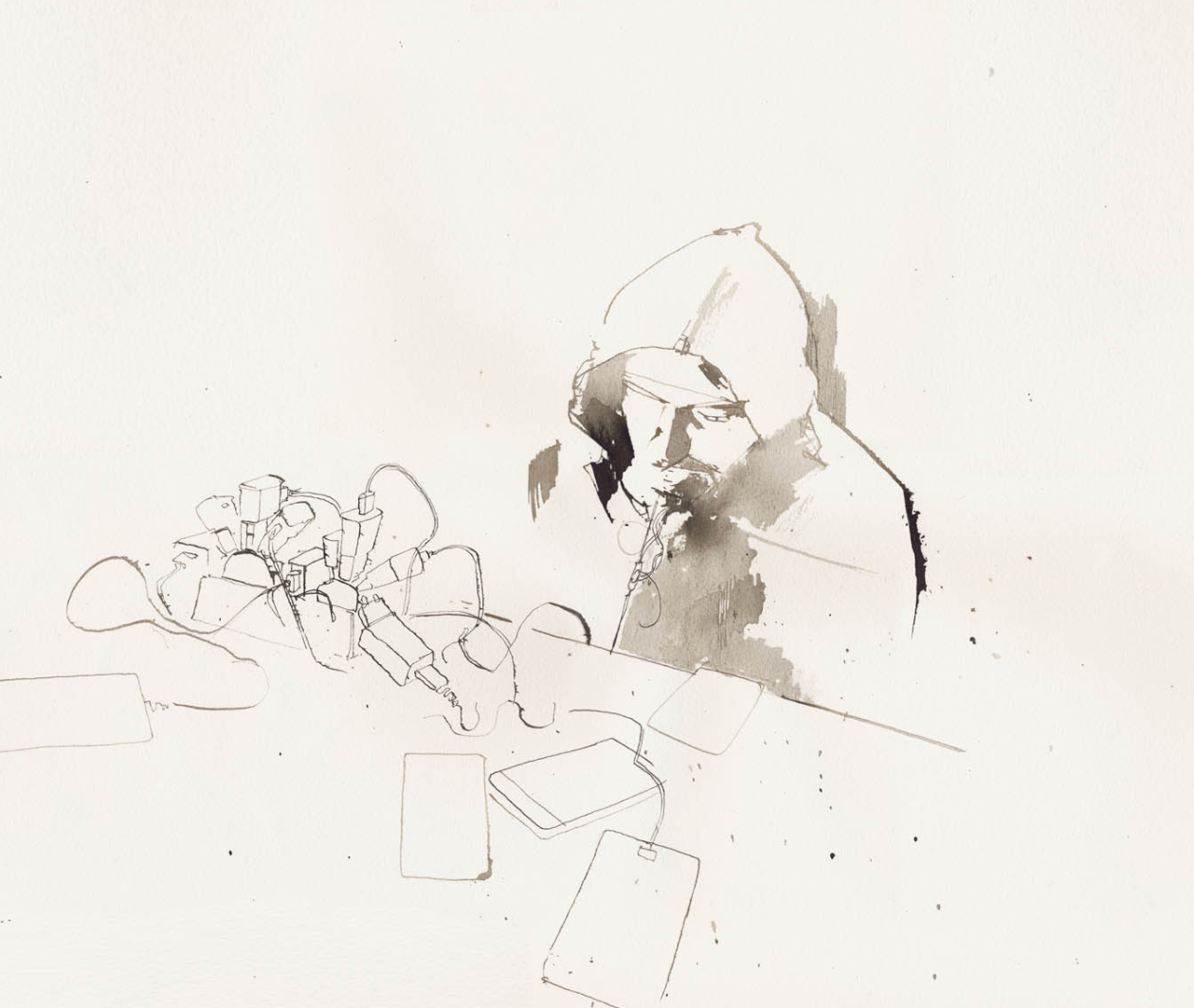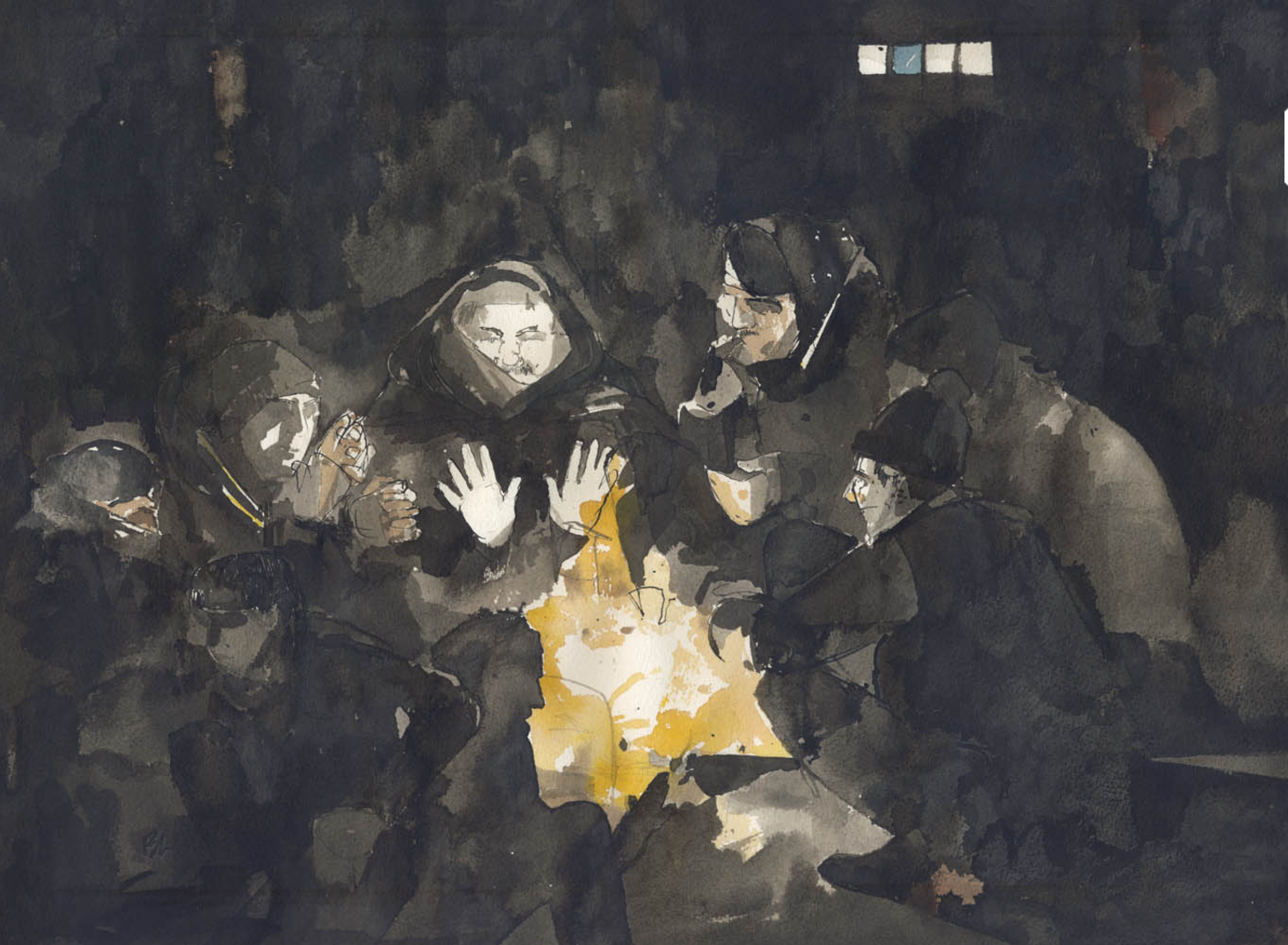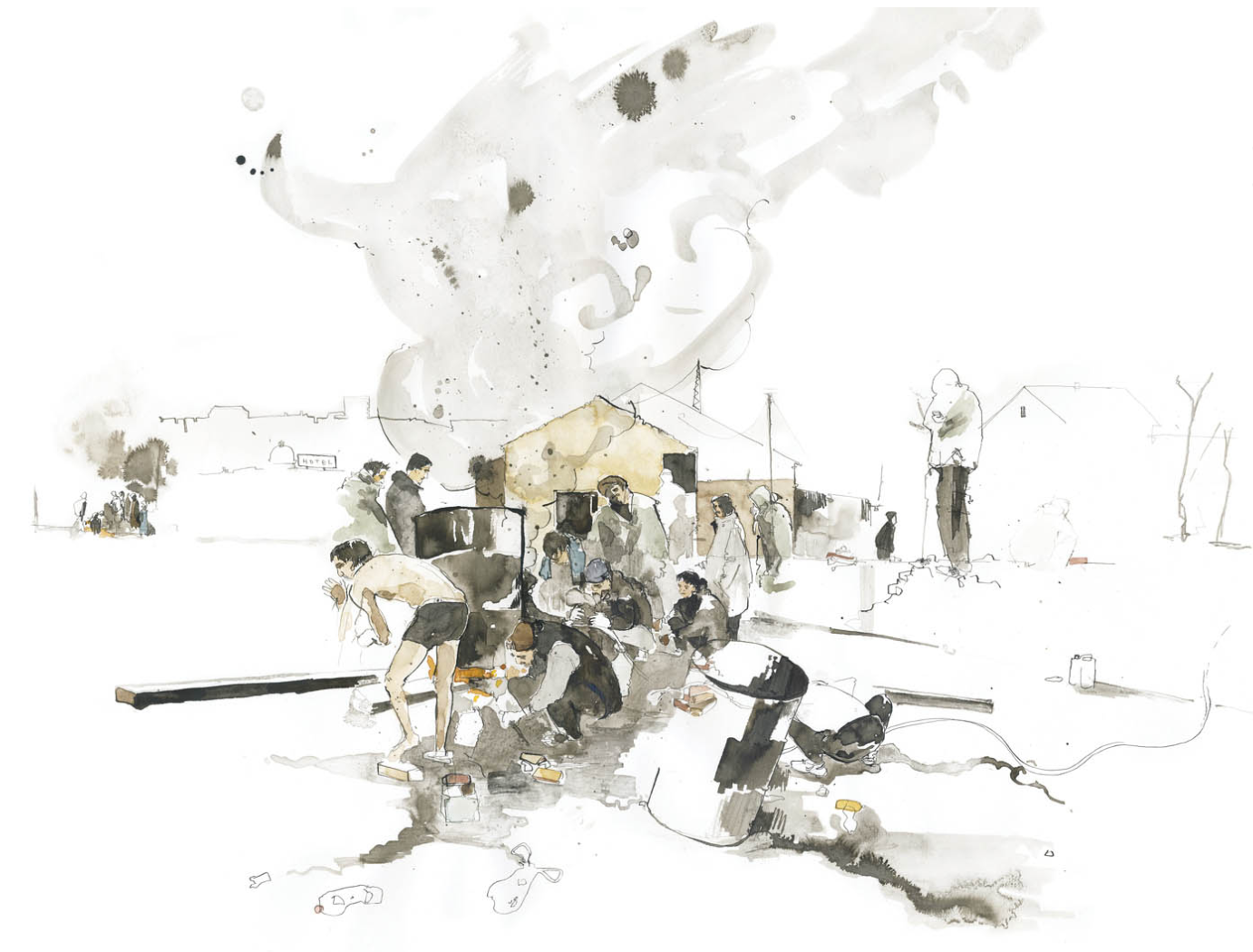January. A cold snap. The air a touch above zero. At night the fog freezes, snow falls. In a cluster of warehouses behind Belgrade’s main train station are a couple thousand holdouts: The Serbian government has offered heated shelters to ride out the weather, but rumor has it the shelters are a trap—a deportation dragnet—with Bulgaria at the other end. And in Bulgaria are zealots bent on violence, so rabid is their xenophobia. Most here are Syrians, young men for whom the government’s shelters feel like prison. They’d rather take their chances here than end up pacing in a bureaucratic box, even a heated one. So they burn whatever they can find to keep the fires going—tires, buckets, railway sleepers, anything. They can’t help but breathe the smoke, so toxic it burns the lungs, as if frostbite or freezing to death weren’t enough. And they sleep where they can—a corner, a carport, on spaces claimed by cardboard squares. In the morning, out in the snow, they bathe near heated barrels, the water warmed by more fires, more smoke. The Balkan Route is closed, officially, which means there’s still a way through for the right price. Razor wire along Hungary, along Croatia. Smugglers at the ready. There might be work on the other side. An idle morning waiting for a phone to charge, to stay in touch. One kid makes another run for Hungary (he’s been beaten back twice already, but keeps trying). Others wait and see. And wait. And the wait is maddening.
—Paul Reyes




